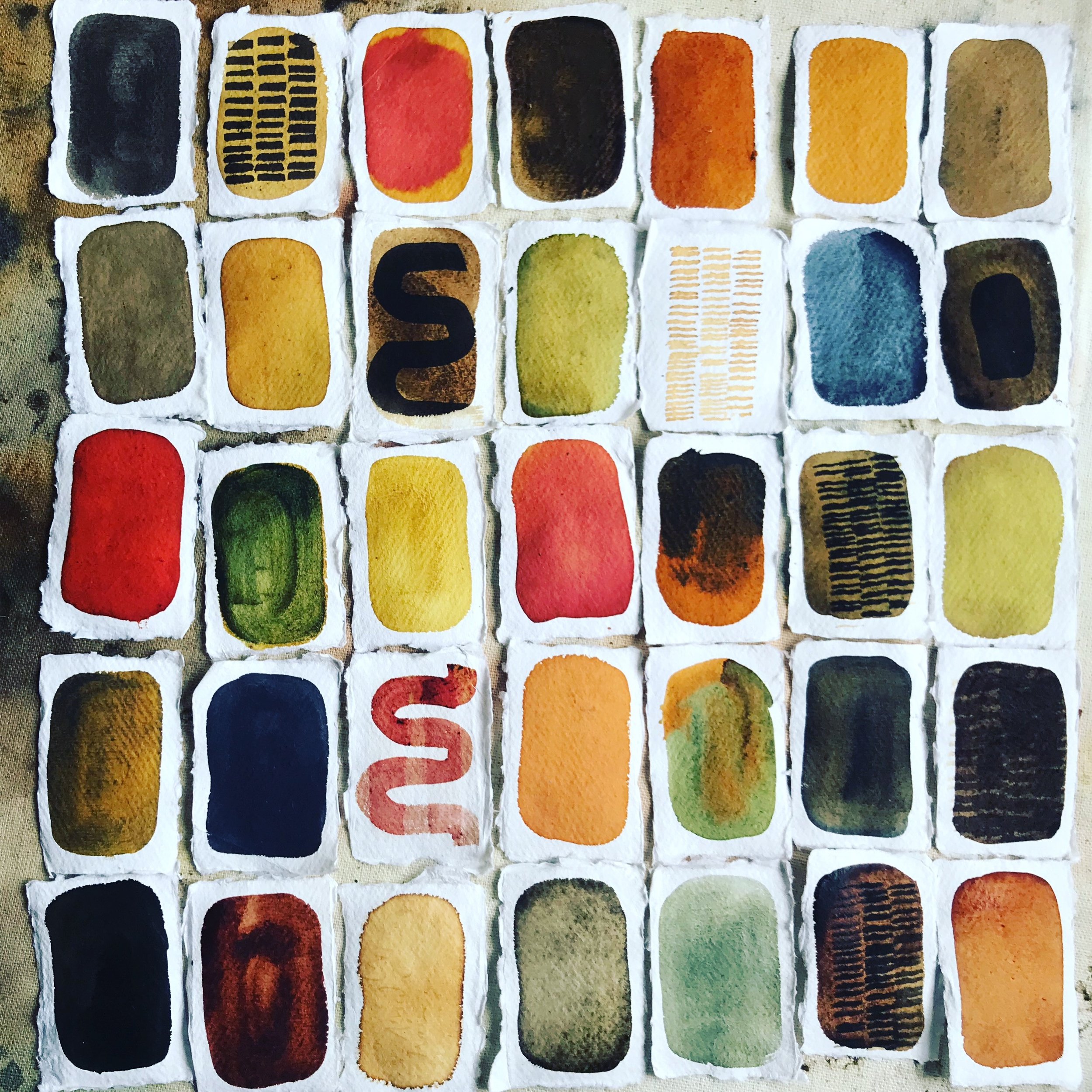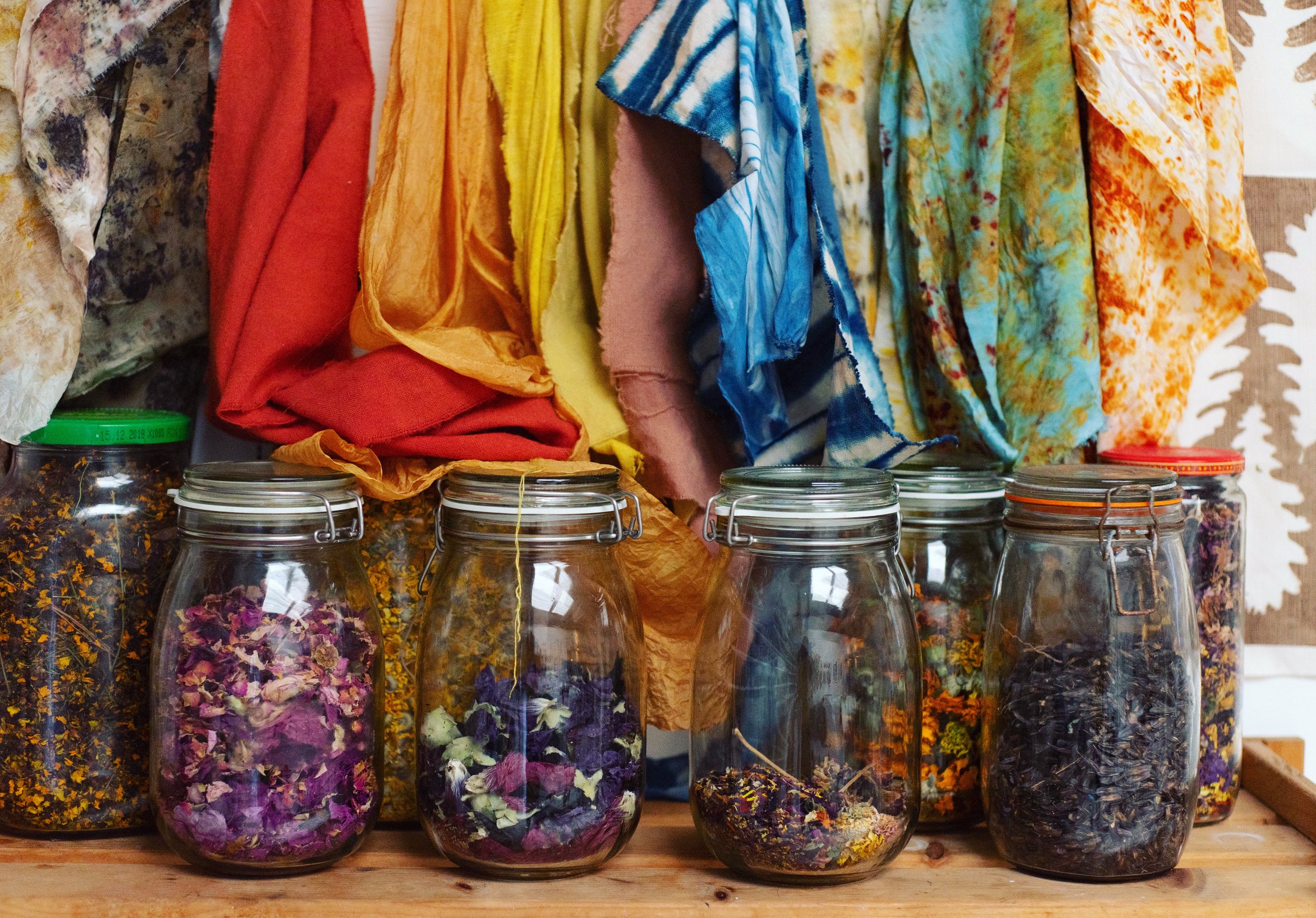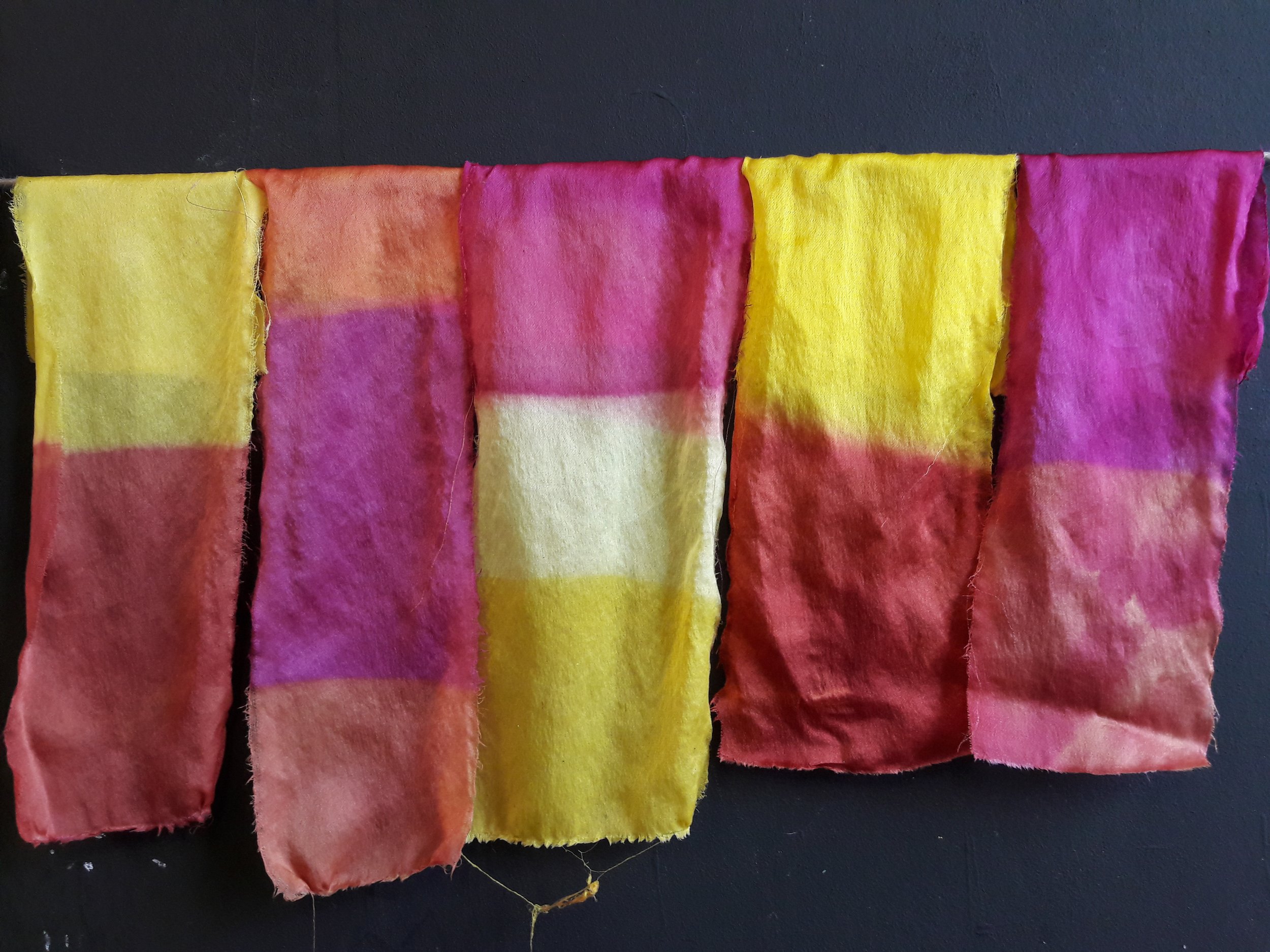
Plant Based Colour Making For Textiles And Paper
-
Botanical Ink & Paint Making Online Course
An introduction to four techniques for making inks and paints. Soda ash inks, evaporated inks, extract inks, and lake pigments. Identifying reliable and effective plants for pigment. How to use binders, preservatives, and additives. Working with metals, acids, and alkalis as to fix and transform colours on the paper.
-

Introduction To Natural Dyes Online Course
Specialising in effective plant based mordants (fixatives) for vibrant colours. We will look at fabric, fabric preparations, dye plants, extraction processes, and dye processes, and over-dyeing through written recipes and video tutorials.
-

Online Year Course
A year long online course starting in September 2024 - Offering an in depth introduction to botanical colour applications for textiles and paper, from plant foraging and cultivation, to making dyes, inks, paints, crayons, print-pastes, & more. Fostering connection with nature, while cultivating technical skills, artistic exploration, and creative community.










